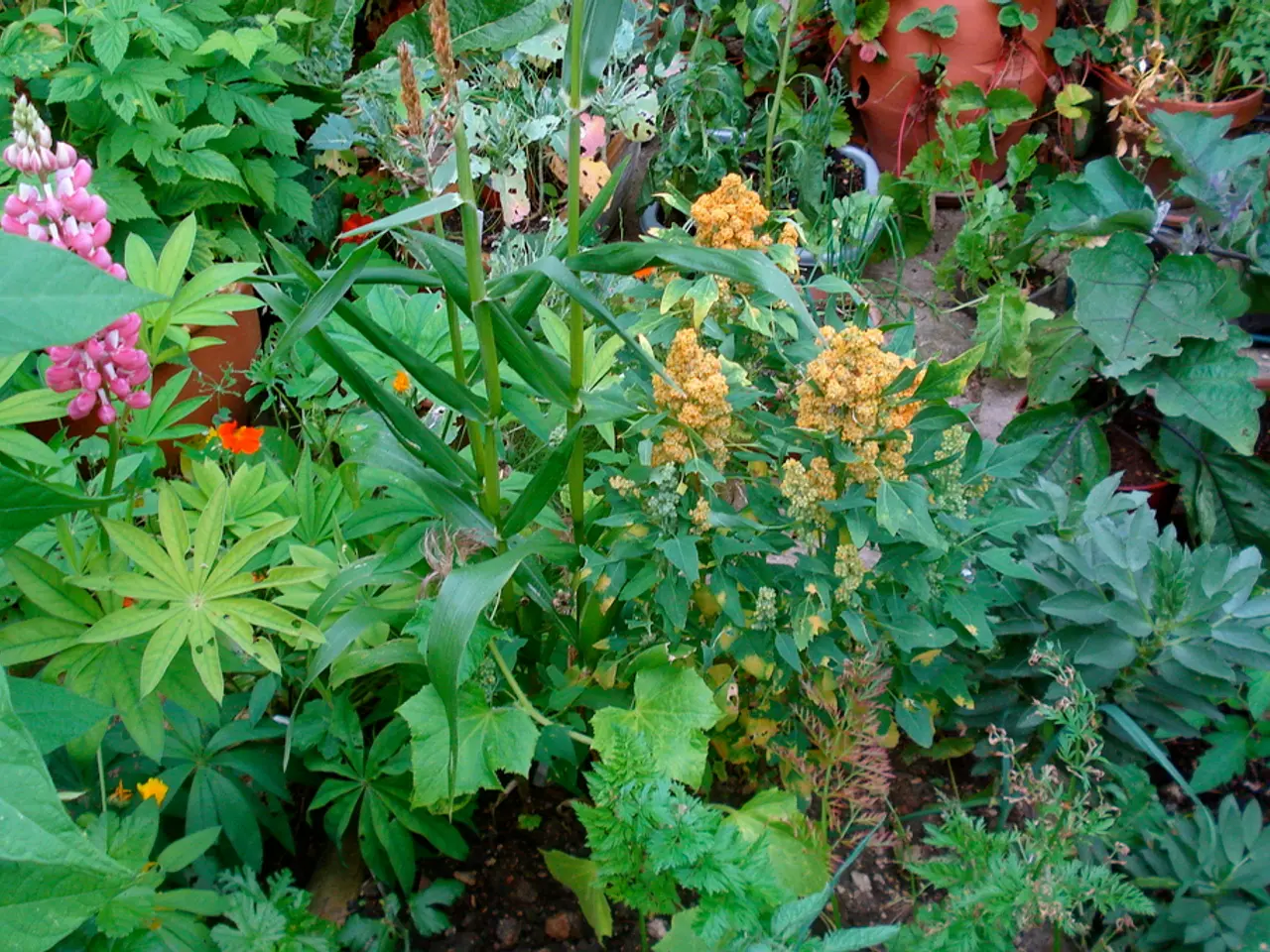Reclaiming an Unkempt Green Space: Tips for Revitalizing an Overrun Garden
In an overgrown garden, it may seem like a daunting task to bring it back to life. But with a structured approach, you can transform your garden into a manageable and rejuvenated space. Here's a step-by-step guide based on current expert recommendations.
Step 1: Identify and Assess
Determine the types of plants (including trees and perennials), soil quality, and extent and species of weeds in your garden. This informs what tools and methods are needed for the task at hand.
Step 2: Divide and Rejuvenate Perennials
Late summer is the ideal time to cut back lightly faded or overgrown perennials by removing dead branches, flower stalks, and wilted leaves to encourage revival. For overgrown perennial clumps like iris or astilbe, lift and divide them when they are dormant. Transplant the divisions and water them thoroughly until established.
Step 3: Prune Overgrown Plants
For overgrown shrubs or vegetables, prune using clean, sharp tools to remove excess growth and improve health and yield. Regular trimming can prevent legginess and help plants thrive.
Step 4: Control Weeds
Start by physically removing weeds by hand or with hoes. Mowing can keep weeds down in grassy areas. In some cases, use weed burners carefully to control persistent weeds. Work systematically in sections to avoid overwhelm and track progress.
Step 5: General Garden Upkeep
Remove rubbish and debris before starting clearing. Wear proper protective clothing and use appropriate equipment (mowers, strimmers, garden forks, gloves). After clearing and pruning, nurture remaining plants with watering and fertilizing as needed to promote recovery and growth.
Many perennials naturally produce more plants over time. Not all plants can handle rejuvenation pruning, but those that do will recover and become more manageable. For large plants or dead trees, professional help from an arborist may be necessary.
Hardy species can have canes taken down to 6 to 10 inches (15-25 cm.) from the ground during rejuvenation pruning. Examples include dogwood, lilac, honeysuckle, hydrangea, abelia, and St. John's Wort.
The overgrown state of a garden can create a chaotic appearance. Over time, with pruning, division, and selective plant removal, a garden can be returned to its former glory. It's best to start working on one area of an overgrown garden at a time to prevent feeling overwhelmed.
Rejuvenation pruning is a drastic method of reclaiming overgrown gardens, best done in early spring before bud break. Some plants should be removed altogether due to poor growth habits.
Tips for reclaiming an overgrown garden include plant identification, dividing perennials, rejuvenation pruning, and controlling weeds. Dig out perennials in fall after the foliage has died back and divide any that are too large. In spring, when all plants have flushed, overgrown landscape beds are easiest to assess.
Replant the amount you wish to see in the garden. Smaller shrubs and bushes can be trimmed back by one-third in early spring to manage size and growth. The process of reclaiming an overgrown garden may involve hard work and multiple seasons.
The first step in reclaiming an overgrown garden is to identify unwanted plants and remove them, including their roots to prevent re-sprouting. Controlling weeds is essential in overgrown gardens. Non-toxic methods include solarization (hoeing plants into the soil and covering the area with black plastic) and mulching around desired plants.
The decision to repair or completely revamp an overgrown garden depends on the garden's underlying structure (bones). With patience, persistence, and a well-planned approach, you can successfully reclaim your overgrown garden and enjoy a thriving, manageable space.
Incorporate gardening techniques into your lifestyle by following the steps to reclaim an overgrown garden, such as identifying plants, pruning, and controlling weeds. By adapting these homesteading practices on your home-and-garden space, you can transform it from an unmanageable state to a rejuvenated and manageable area.




